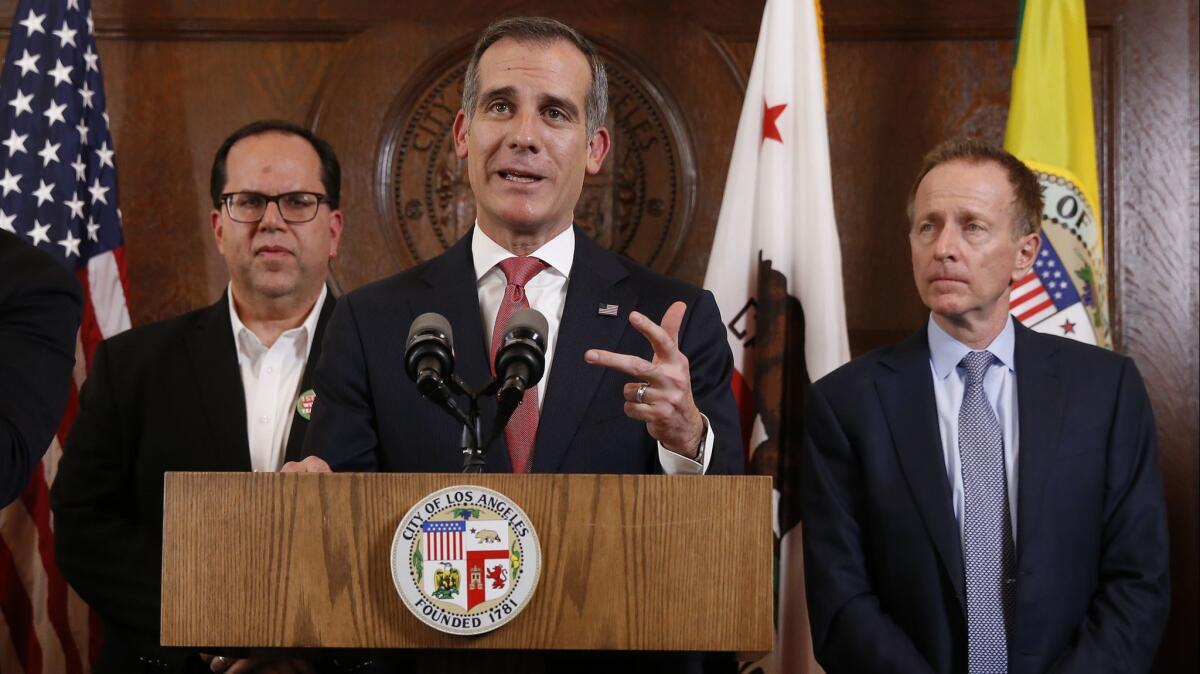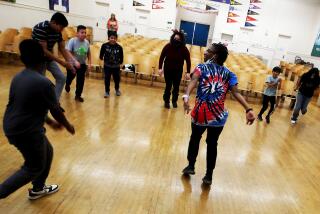Editorial: The LAUSD strike may be over, but the real work lies ahead

- Share via
On Wednesday, some 31,000 Los Angeles teachers will be back in school. Nearly half a million students will back to learning. And parents’ lives will be back to normal after the six-day strike and the weeks of uncertainty leading up to it.
It has been a deeply disruptive period — and expensive as well, both for teachers, who went without pay, and for the Los Angeles Unified School District itself, which lost well over $100 million in state funding tied to student attendance.
On the positive side, the strike did something that could prove transformative in the coming years: It put the importance of a quality education front and center in the public psyche. The urgency and attention generated by the strike must not now be allowed to fade.
Garcetti deserves credit for stepping forward to mediate the settlement, thereby avoiding a longer strike.
For more than a week, teachers, families and supporters marched and picketed in support of their local schools. People following the news got a crash course in the issues at the heart of the strike — overcrowded classrooms, understaffed campuses, unsustainable pension liabilities, inadequate state funding and the role that privately operated charter schools play in public education.
That’s good, because those issues are not going away, and because fixing Los Angeles’ schools will ultimately require more money. That, in turn, will require squeezing more aid from Sacramento and could mean voter approval of new taxes as well.
From the beginning, the strike wasn’t about whether L.A.’s schools had unmet needs. Both the district and the union — United Teachers Los Angeles — agreed that teachers deserved a raise and that the district should lower class sizes and increase the number of librarians, nurses, counselors and other staff. The fight was over what L.A. Unified could afford, given forecasts that show the district could be insolvent in a few years as pension liabilities grow and demographic changes shrink enrollment.
The settlement announced Monday includes promises by the district that it will gradually reduce class sizes over four years, hire more staff, and open 30 “community schools” that offer extra educational and social services to students and families. The district and the union will create a joint committee that will help negotiate the tricky subject of how and when to “co-locate” charter schools on public school campuses, and they will ask the governor to set up a committee to evaluate the overall impact of charter schools on public education.
The future of charter schools in L.A. has been a contentious backdrop to the strike. The union views charters as a threat to public education, because the publicly-funded, privately-operated schools take students and funding from the district. It’s absolutely appropriate for state leaders to scrutinize charter schools and their effects.
The agreement also calls for the district, the union and Los Angeles Mayor Eric Garcetti to work together to advocate for local and state measures to increase education funding, which is woefully insufficient. California ranks near the bottom nationwide in per-pupil spending when the cost of living is factored in.
Enter the Fray: First takes on the news of the minute »
There’s already a measure slated for the 2020 statewide ballot that would remove most businesses from property tax increase limits created by Proposition 13. That could provide a multibillion-dollar boost in state education funding. And there’s discussion of putting a local parcel tax increase on the 2020 ballot to raise money for L.A. Unified schools. Any local ballot measure should spell out how the money would be spent and create a strong citizen oversight board to ensure the money is spent wisely and effectively.
Cooperation on funding measures would be a welcome bit of kumbaya after years of bitter combative relations between the district and union leadership. Garcetti deserves credit for stepping forward to mediate the settlement, thereby avoiding a longer strike. Though the mayor has no formal role in the operation or oversight of the school system, he brought the two sides together in City Hall for marathon negotiating sessions and helped smooth the acrimony between union President Alex Caputo-Pearl and schools Supt. Austin Beutner.
L.A.’s public schools are responsible for educating nearly 500,000 children, many of them low-income or non-English speakers or students of color. The success of the city in the years ahead relies upon the existence of safe, adequately funded, high-quality public schools capable of educating a new generation of Angelenos. The strike may be over, but the real work lies ahead.
Follow the Opinion section on Twitter @latimesopinion and Facebook
More to Read
A cure for the common opinion
Get thought-provoking perspectives with our weekly newsletter.
You may occasionally receive promotional content from the Los Angeles Times.









